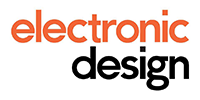 According to market research firm IHS, the energy storage market is set to “explode” to an annual installation size of 6 GW in 2017, exceeding 40 GW by 2022. Such forecasts reveal a huge jump from an initial base of only 0.34 GW installed in 2012 and 2013. Here is a list of seven energy storage disruptors that are innovating and changing the industry as we know it:
According to market research firm IHS, the energy storage market is set to “explode” to an annual installation size of 6 GW in 2017, exceeding 40 GW by 2022. Such forecasts reveal a huge jump from an initial base of only 0.34 GW installed in 2012 and 2013. Here is a list of seven energy storage disruptors that are innovating and changing the industry as we know it:
ViZn Energy. Founded in 2009, this firm is using an emerging technology called a zinc-iron flow battery. That battery runs on a safe chemistry that is non-toxic, non-flammable, and non-explosive. In addition, flow battery systems do not require cooling systems. The company just announced a large-scale storage microgrid project that will be built in Nicaragua at Rancho Santana Resort (Fig. 1). There, the ViZn (four-hour) flow batteries will be combined with an 800-kW-peak solar photovoltaic (PV) system. It will be interesting to observe whether this technology will significantly attract more investments and carry more projects.
Nissan and Eaton. These companies provide a sustainable energy storage solution for homeowners known as the Nissan XStorage unit (Fig. 2). These units provide a second life for Nissan’s electric vehicle (EV) batteries. The XStorage units can draw energy from the sun or from the grid (a smartphone app will allow consumers to manually switch between energy sources).
The units come with solar panel inverters that are already integrated for use with renewable energy sources, such as existing solar panels. They are available in different sizes: 4.2 kWh (second life batteries), 6 kWh (new or used batteries), and 9.6 kWh (new batteries). This should be a good option for homeowners who are allowed and able to sell energy back to the grid. They also could be use as energy back-up in case of a blackout. Time will tell if reusing batteries for stationary energy storage applications is profitable and if this sustainable solution will eliminate the need of battery recycling.





